Lendlease needs more than a King’s ransom but a joint venture with Crown Estate is a good start

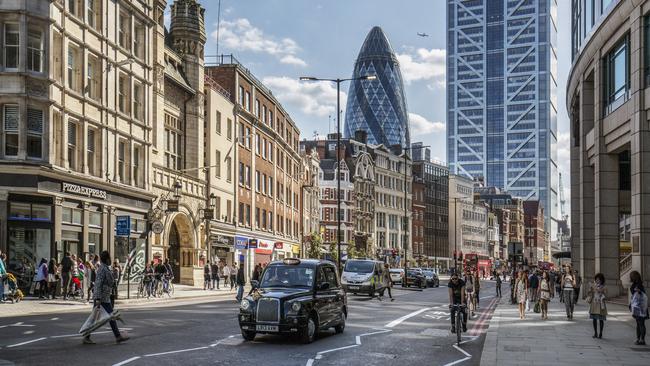
Lendlease has struck a deal with royalty, but is this enough to impress markets?
The gnawing worry is by entering a development joint venture with Crown Estate, the UK entity that manages property on behalf of the King, Lendlease is up to its grand old ways by pursing ambitious developments offshore.
It’s been almost 12 months since Lendlease boss Tony Lombardo outlined his all-or-nothing reset for his company designed to exit high capital-intense offshore operations to focus the property major back in its higher-returning home market.
The plan was in response to a core group of noisy investors, including John Wylie and Simon Mawhinney, who were demanding more and the scalp of then chairman Michael Ullmer.
The core of their frustration was that over recent decades Lendlease has spent so much effort expanding around the world, but the returns have been miserable for all the risk it was adding to its books. They pretty much got what they wanted but Lendlease hasn’t followed the script with a rebound. Instead it’s gone lower.
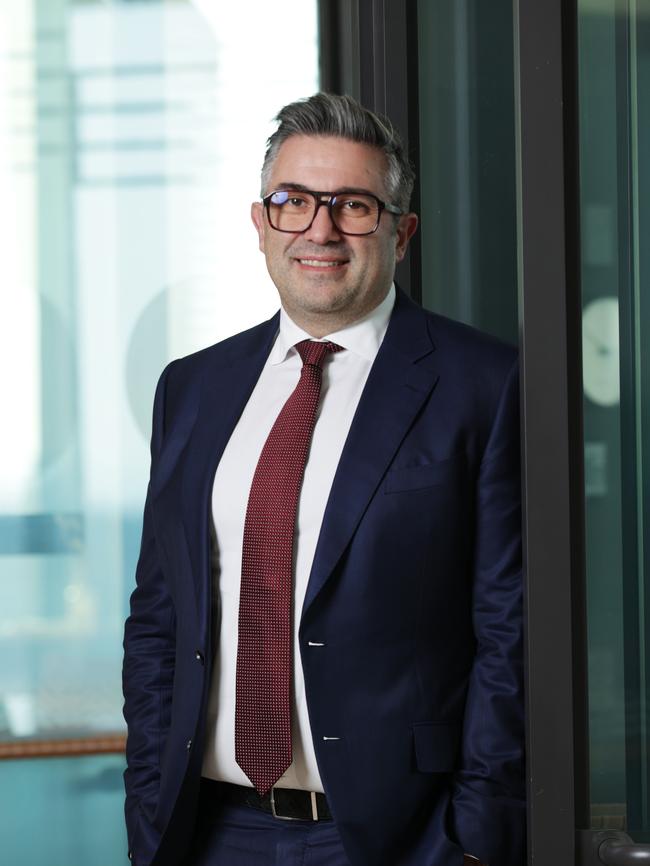
The key to the Lendlease plan was the exit from the bulk of its international operations and bringing more than $4.5bn back to Australia over three years, which could be invested in other projects that promised higher returns, with some of this making its way back to shareholders. There was a near-term target of $2.8bn in released capital by the end of this financial year.
Some international exposure would remain, but through a heavily modified version, and that was through its international investments platform. There was $125m in costs to be cut.
The new joint venture outlined Monday results in Crown buying into six of Lendlease’s UK-based development projects for $300m. Essentially it shows how tough it is for Lendlease to make a clean break from some of its legacy development deals.
Lendlease still has a master development agreement with several London boroughs and Birmingham. One of the projects involves land and development rights over the busy Euston Station. The agreements in themselves don’t require Lendlease to pull the trigger on a development, but there’s little use sitting on all this land if it’s lying idle.
Here Crown Estate is expected to deliver the financial horsepower in any future developments and Lendlease has the management expertise and is expected to be appointed as development manager if any the UK projects move ahead. However if a project does get the green light Lendlease will retain the option to invest up to 10 per cent, putting its close to becoming an international developer again.
The Crown deal is entirely consistent with the strategy template outlined last May, Lombardo insists, adding that Lendlease is not getting back into offshore development.
Instead, the 10 per cent option allows Lendlease to remain on in yet-to-be developed projects as an investment manager and return a recurring fee from this position. If it all sounds complicated that’s because it is, in contrast to Lombardo’s promise of keeping things simple.
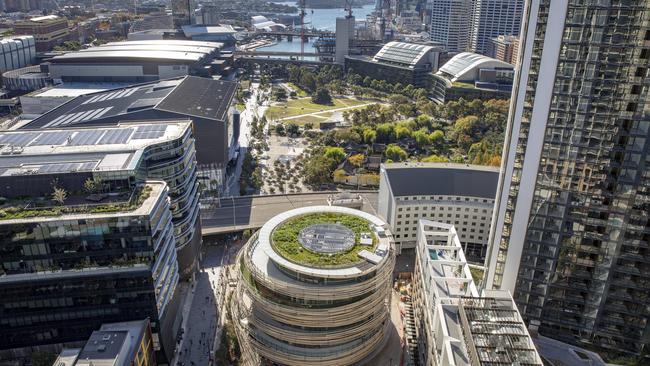
There is no doubt that Crown is a strong partner to have. The royal dust from the Crown Estate name is a quasi-endorsement of Lendlease, that the Australian can add to its resume when it is shopping for investment partners in other projects closer to home.
Crown Estates is cashed up with more than $30bn in core land and asset holdings. Crown has trusted Dan Labbad, an Aussie who is an ex-Lendlease executive, to run its portfolio.
On Monday Lombardo also outlined that Lendlease had won a $1.2bn investment mandate in Australia on behalf of an existing investor, Korea’s National Pension Service.
The deal, combined with a string of sales, now gets Lombardo within striking distance of his short-term target. So far he’s booked $2.5bn in returned capital in a year of rapid-fire asset sales, including the monster communities business for $1.06bn. He’s also hinted at the potential for more to come, including higher than the $500m which was targeted for a buyback, and further asset sales. So far he’s booked $460m in the sales.
Lombardo says his near-term capital recycling is running 80 per cent to target, which is a strong outcome given the backdrop of tough capital markets.
He concedes the market will still need to see more consistency from the new Lendlease before it starts rating the turnaround. Prior to Monday’s deal, Lendlease was trading nearly 10 per cent lower since last May’s strategy. It is also down 11 per cent year to date.
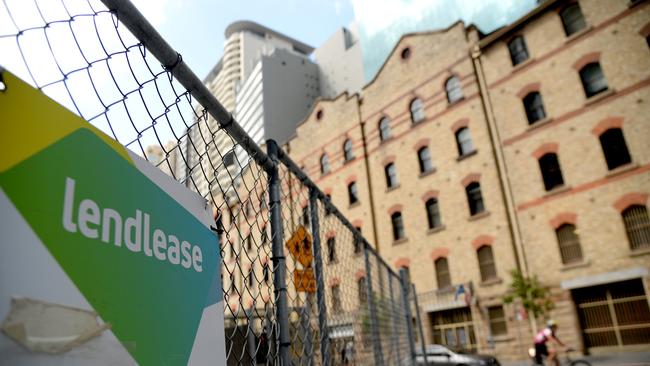
Before word of the British deal started making its way into the market last week, Lendlease’s shares were on track to break below the all-important $5 mark. That would have put Lendlease back to levels last seen in the days coming out of the global financial crisis. It’s a long way from where it wants to be.
Lendlease remains a much smaller business these days with a value of $3.8bn. At its peak in 2018 it was worth closer to $12bn.
A rally at the end of last week helped Lendlease rebound back to $5.51 – although on Monday it still finished 0.4 per cent lower.
Property rivals like Mirvac and Charter Hall have both outperformed the broader market over the year, helped by falling cash rate futures.
The market isn’t convinced yet on Lendlease’s rebuild. However, analysts tracking the stock are starting to change their tune.
It was a big moment when brokerage Citi upgraded its call on Lendlease to a buy last week. This now puts four of the six key analysts tracking the stock with a positive rating. Morgan Stanley has neutral and Barrenjoey continues to be a sell.
Lombardo says there will be a lot of noise while driving a turnaround in a volatile market, and acknowledges many would want to see progress.
“We are progressing, I just think the market is being more cautious overall,” Lombardo says.
‘Misallocation’
Poor allocation of capital plays into Angus Aitken’s theory of corporate relativity. “Good companies out of favour always offer the most upside if you are patient,” the Aitken Mount Capital partner says.
“The best upside is where stocks are priced for poor allocation of capital, and that capital allocation is going to improve in the future.”
Domino’s Pizza is the one currently on Aitken’s radar. The global fast-food chain has fallen from grace from its Covid-lockdown heyday when it was changing hands at more than $160 a share. Today it’s below $25 and new chief executive Mark van Dyck has his work cut out rebuilding momentum.
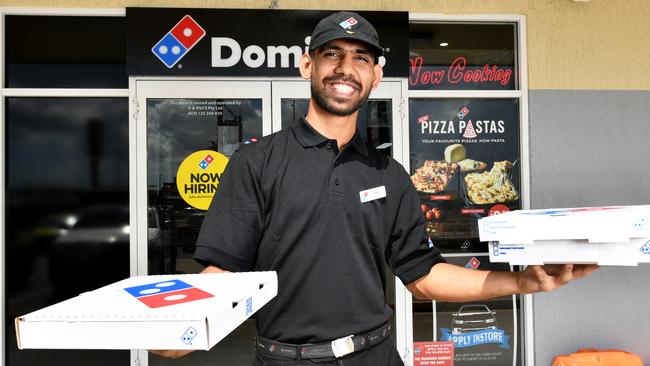
Aitken says Domino’s 25 per cent-owner and Hungry Jack’s founder, Jack Cowin, is “the best fast-food person” over the decades in this country and will have a determination for Domino’s to get firing again.
Domino’s shares have gone down over the past five years as they allocated capital poorly into offshore markets such as Japan which were far lower returning than Australia.
Van Dyck, the former Compass boss who took over at Domino’s from Don Meij last year, is understated and fiscally responsible, Aitken says. Expect a different Domino’s to follow.
Where growth for the sake of getting bigger was the previous goal, van Dyck has so far outlined a plan which involves shutting down 205 poor-performing outlets and improving sales from existing stores in the Domino’s network. More savings are expected to be detailed at a strategy day scheduled for later this year.
On Monday, Domino’s executive shake-up continued. Recently appointed Australian operations boss (and Meij’s sister) Kerri Hayman will exit. Chief operating officer and former franchise owner Greg Steenson will take charge of the Australian business. This follows new appointments covering marketing and strategy.
johnstone@theaustralian.com.au


